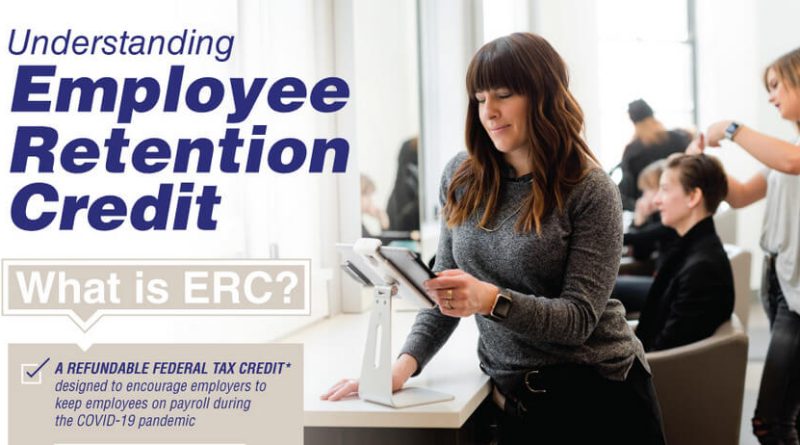How the Employee Retention Credit Can Help Your Business
Employee retention credit (ERC) can be very beneficial to employers. ERC is a refundable federal tax credit that is designed to encourage employers to keep employees on payroll during the COVID-19 pandemic. It is additionally not considered a loan that needs repayment.
Employee Retention Credit Criteria
ERC is currently available for the 2020 and 2021 tax years. The 2020 ERC is 50% of the wages paid up to $10,000 per employee for the period between March 12, 2020 and December 31, 2020 with the amount capped at $5,000 per employee.
The 2021 ERC is 70% of the wages paid up to $10,000 per employee per quarter for three quarters of 2021 with the amount limited between $21,000 and $28,000 per employee.
Only a company that opened after February 16, 2020 with less than $1,000,000 in revenue can file for the fourth quarter of 2021 as a recovery startup business.
If your business suffered from the COVID-19 pandemic and you are considered a recovery startup business, you could receive between $26,000 and $33,000 of tax credit per employee.
The ERC is designed to help businesses recover from the economic downturn caused by the pandemic, make up lost revenue, and keep employees while continuing business operations.
Although the ERC program officially ended in 2021, you can still receive funds. Not all businesses qualify for ERC, but several of the ones that do don’t realize it.
How Your Business Can Qualify
Your business can qualify for ERC if you experienced a decrease in revenue due to COVID-19, such as a significant decline in gross receipts during 2020 or general decline in gross receipts during 2021.
Your business can also qualify if you are operating as an organization in the U.S. (regardless of size). This includes nonprofits, colleges, universities, real estate, industrial, construction, retail, and hospitality.
Another way your business can be considered is if you experienced a full or partial suspension from government authorities that limited business hours, or:
-
- Suspended operations either partially or completely
- Shut down your supply chain or vendors
- Stopped the delivery of important goods or materials
- Reduced offered services
- Limited the workforce in a way that led to the suspension of operations
- Closed specific divisions or departments
- Stopped visitations to client job sites
- Reduced operations via social distancing
- Slowed work that could not be completed from home.
If government orders limited travel and group meetings, resulting in reduced operations and a “more than nominal impact” on business operations (defined as an impact of 10% or more per quarter), you may qualify for ERC in that quarter.
For any quarter you had a full or partial suspension that lasted for at least two weeks due to government interference, you may still have a chance to qualify for ERC in that quarter.
To be considered a recovery startup business in the third or fourth quarter of 2021, your business should have opened on or after February 16, 2020.
Additionally, your annual gross receipts should not exceed $1 million for the 2020 and 2021 tax years.
You must have more than one W2 employee as well (not including owner-operators or family members).
It is very important to remember that getting ERC requires qualifying wages.
This means the wages taken into account include cash payments and a part of employer provided health care costs.
Businesses that received Paycheck Protection Program (PPP) loans may still be eligible for ERC.
Credit amounts are calculated based on whether an employer had more or less than 100 or 500 average full-time employees in 2019.
If an employer had less than the target number, credit will be based on wages paid to all employees whether they worked or not during the calendar quarter.
If the employer had more than the target number, credit will be contingent on wages paid to employees who did not work during the calendar quarter.
In 2023, many businesses are claiming ERC by amending their tax filings as it takes between four to ten months on average for the IRS to process ERC claims and mail checks.
In Conclusion
Don’t worry if you already received PPP loans during the pandemic as there is still time to find out if your business is eligible for employee retention credit.
